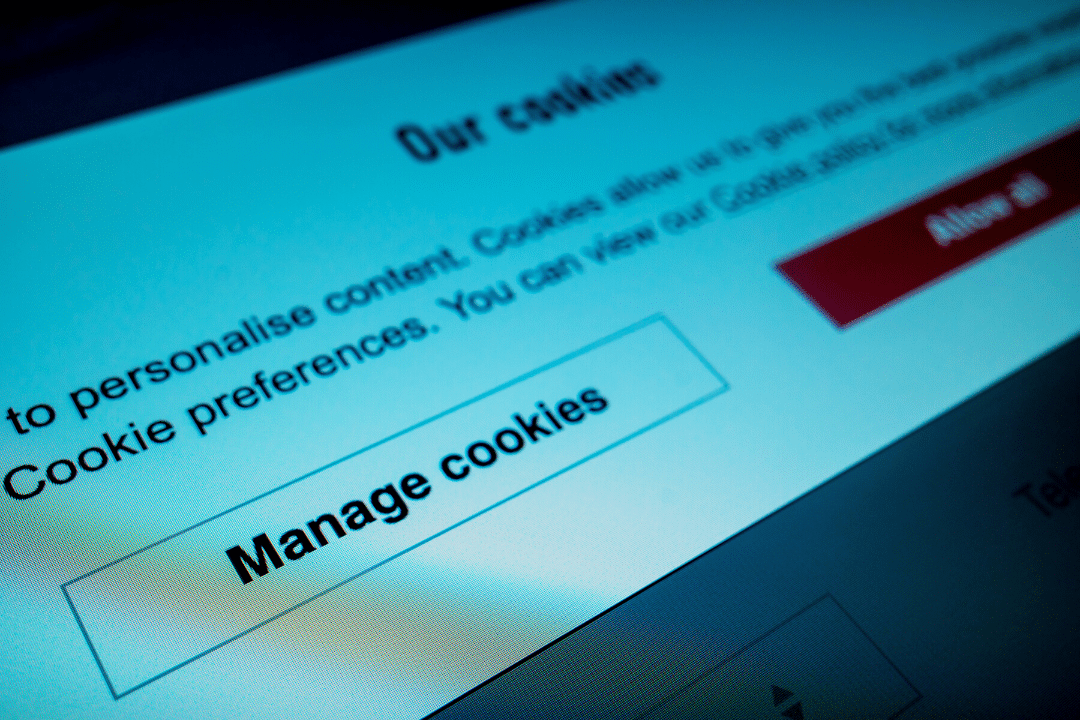What To Do in a World Without Cookies

Whether you’re partial to chocolate chip or oatmeal raisin, Girl Scout or Keebler, the thought of a world without cookies may be terrifying. Oh wait, that’s not the kind of cookies that are crumbling. Rather, it’s those snippets of code that get placed on your browser when you land on a website. Once at the very foundation of digital advertisers’ targeting strategies, the use of third-party cookies has been in decline for years due to privacy concerns. And now that Google has joined the trend, you need to prepare for their full demise.
What Are 3rd Party Cookies?
First-party cookies are set by an individual website—the one you visit. Second-party cookies are not common but are used in data-sharing agreements, where a website you visit has a specific data collection partnership with another entity. And third-party cookies are set by a server other than the one you access. In practice, that means when you go to a favorite brand’s website, it first uses first-party cookies to optimize your experience there. It may save your contact info, login, credit card info, and even your product selection and buying preferences. That website may also allow third-party cookies. Through an arrangement with outside advertisers, these cookies can track your browsing across other websites.
Advertisers will tell you third-party cookies allow them to provide you with an optimized user experience and personalized ad content; they serve you ads for products and services you most likely want to see. What advertisers may not tell you is that third-party cookies have been the lifeblood of what they have done almost since the dawn of digital marketing. Third-party cookies and the targeting and personalization they build help increase engagement, conversions, and sales. What they deem good for you is even better for them.
Why Are 3rd Party Cookies Going Away?
Driven by privacy concerns and legislation like Europe’s General Data Protection Regulation and the California Consumer Privacy Act, browsers have been phasing out the use of third-party cookies for years. Apple blocked their use in 2020, but Google and its stranglehold on search was more reluctant. It delayed plans for the phaseout twice before hitting the go button this year. In January 2024, it began the deprecation beta for 1 percent of its Chrome users (if you were part of the test, you would have been notified). If that sounds like a miniscule effort, consider that the behemoth holds 65 percent of search and that one percentage represents 30 million users. And Google promises that the full deprecation will be complete by Q3 of this year.
What Will Digital Marketers Do Without Cookies?
If you advertise online, you use third-party cookies. And if they’re going away, you need to plan a new way of doing business. Now. Particularly with programmatic advertising that relies heavily on those third-party cookies, if you do not prepare, you could face a swift loss of inquiries and income.
But there are ways to target users, customize content, and produce solid leads and results without third- party cookies. Consider how you can best transition away from third-party cookies:
Leverage 1st Party Cookies
It was no accident that Google rolled out GA4 before it began phasing out third-party cookies. GA4 uses first-party cookies, and its new events and parameter metrics allow you to pull granular insights from your website that help you get to know your users really well. In this way, first-party cookies can be a win-win. They give users who visit your website the best experience possible. The data you save on individuals help you build stronger relationships, serve customized content, and deliver better customer service.
You can also use first-party cookies to track user interactions and behaviors on your website to create profiles of user preferences, interests, and actions. Those profiles can then be used to segment your audiences, hyper customize your content, and serve ads where your customers are most likely to roam on the internet. Personalized ads enhance the user experience, improve engagement, and increase conversions.
Another way to use first-party data is through contextual advertising. Among the most obvious contextual platforms are Google Ads. Your ads target specific keywords that match user intent. So, if you know your most likely customers love red hats and red shoes, when you bring on a new product line of red belts, you should definitely highlight those red belts in your ads. Users search, your keywords are right there, and voila! Search reveals the red belt nirvana they’ve been looking for.
Don’t Forget AI
You use AI alllllllllll the time. If you think you don’t, you’re not paying attention. It’s time to go all in on its exponential potential for digital marketing. Just a few ways AI can fill in the gaps for what you think you might lose without third-party cookies:
- AI Search Algorithms
- AI-powered search algorithms can help understand the intent behind user searches and deliver relevant ads based on the context of the search query. This helps you align better with user intent without tracking individual user journeys.
- Predictive Analytics
- Imagine if you could take all the historical data you have hidden away in CRMs, campaigns, and old-fashioned Excel spreadsheets and turn them into futuristic insights. AI can create predictive models for user behavior that help you detect patterns and trends that will help you target, personalize, and engage users without the use of third-party cookies.
- AI Lead Scoring
- AI-driven lead scoring models can identify your best prospects by analyzing buying signals such as website visits, content engagement, and historical data. Once analyzed, the model can assign scores so your sales team works the leads most likely to convert. AI models also continuously learn and adapt, improving over time.
What About Zero-Party Data?
Zero-party data are willingly shared with you directly from the consumer. There’s no need for cookies because you simply ask your users for information. Examples of zero-party data include:
1. Settings
By simply setting up an account with you, users share important data. Their name, contact information and location are only the start.
2. Survey Responses
By gathering user feedback about product preferences, insights, and expectations, you can better customize how you interact with users—and even how you build your offerings and run your organization.
3. User-Generated Content
When users contribute reviews, ratings, and comments, it’s considered zero-party data—even if it does not occur on your site.
4. Interactive Content
Information you acquire through quizzes, polls, and games is zero-party data. When users willingly engage and provide information about themselves, it’s a treasure trove of data that you can use to segment lists, refine messaging, and personalize the content you send to them.
5. Customizations
You likely ask questions of users all the time. How do they prefer to receive communications from you? How often? Do they want to subscribe to your newsletter? What topics interest them?
What To Do Right Now About the Demise of 3rd Party Cookies
Digital marketing moves quickly and lots of businesses, advertisers, and agencies miss the train. Unlike Google’s daily algorithm updates that can wreak havoc on organic traffic and results and for which you receive exactly zero notification, you’ve been given fair notice about this whole third-party deprecation whatchamacallit. The Google gods have spoken. Ignore them at your peril. It’s time to develop pristine first-party data so you’re ready when third-party data disappears. Not sure how to start? Contact the experts at CloudControlMedia. We set our clients up for success long before the first rumblings of third-party deprecation. Contact us today.
Linda Emma is head of marketing at CloudControlMedia. With more than two decades experience in digital marketing, she helps clients tell their unique stories while driving performance metrics that translate to results.


